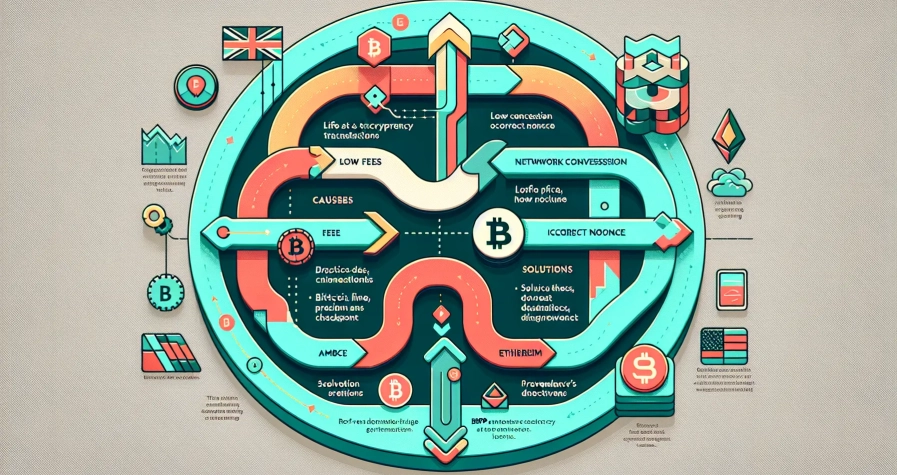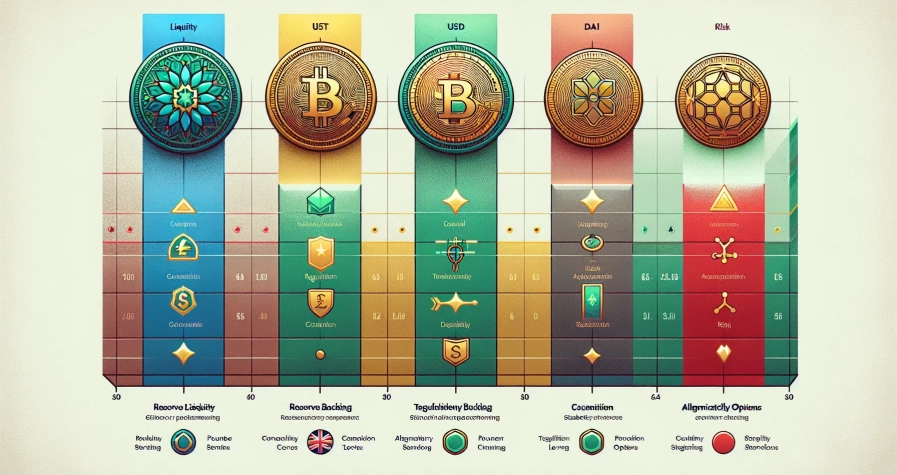Key Takeaways
- Non-custodial wallets grant complete control over your cryptocurrency by keeping private keys exclusively in your possession, eliminating reliance on third-party services or exchanges
- Enhanced security and privacy protection come from offline storage capabilities, direct blockchain interaction, and elimination of centralised attack vectors that commonly target exchanges
- Three main wallet types are available: hardware wallets (maximum security), software wallets (convenience), and paper wallets (basic cold storage), each offering different security levels and accessibility features
- Significant responsibilities accompany ownership, including managing private keys, technical complexity, and bearing complete accountability for security without customer support or recovery assistance
- Proper security practices are essential for safe usage, including secure seed phrase storage in multiple locations, regular backup verification, hardware isolation, and implementing multi-signature protection where appropriate
If you’re venturing into the world of cryptocurrency, you’ll quickly encounter the term “non-custodial wallet” – but what exactly does it mean? Understanding this concept is crucial for anyone serious about managing their digital assets securely and independently.
A non-custodial wallet puts you in complete control of your cryptocurrency holdings. Unlike traditional banking or custodial services where a third party manages your funds, these wallets ensure that only you have access to your private keys and, consequently, your crypto assets.
This level of control comes with both significant advantages and important responsibilities. You’ll gain true ownership of your digital currency whilst taking on the full burden of security and backup management. Let’s explore what makes non-custodial wallets essential tools for crypto enthusiasts and how they differ from their custodial counterparts.
What Is a Non-Custodial Wallet?
A non-custodial wallet is a cryptocurrency storage solution that grants you complete control over your digital assets and private keys. Unlike custodial wallets managed by exchanges or third-party services, non-custodial wallets operate without intermediaries holding your funds.
Your private keys remain exclusively in your possession when using non-custodial wallets. These cryptographic keys serve as digital signatures that prove ownership of specific cryptocurrency addresses and enable transaction authorisation. No external party can access, freeze, or confiscate your funds without your private keys.
Non-custodial wallets function through blockchain technology, allowing direct interaction with decentralised networks like Bitcoin, Ethereum, and other cryptocurrencies. You broadcast transactions directly to the blockchain network rather than requesting permission from custodial services.
Key characteristics of non-custodial wallets include:
- Complete ownership – You maintain full control over private keys and seed phrases
- Direct blockchain access – Transactions occur without third-party approval
- Enhanced privacy – Personal information isn’t stored on centralised servers
- Censorship resistance – No entity can restrict your access to funds
- Self-custody responsibility – You manage security, backups, and recovery processes
Popular non-custodial wallet types encompass hardware wallets like Ledger and Trezor, software wallets such as MetaMask and Trust Wallet, and paper wallets for offline storage. Each variant offers different security levels and accessibility features whilst maintaining the core principle of user-controlled private key management.
The fundamental difference between custodial and non-custodial wallets lies in private key ownership – custodial services hold your keys, whilst non-custodial solutions keep them under your exclusive control.
How Non-Custodial Wallets Work
Non-custodial wallets function through cryptographic technology and direct blockchain connections, enabling autonomous cryptocurrency management. You maintain complete control over your digital assets through secure key management and direct network interactions.
Private Key Management
Private key management forms the foundation of non-custodial wallet operations, granting you exclusive access to cryptocurrency holdings. Your wallet generates a unique private key mathematically linked to your public address, creating an unbreakable connection between you and your digital assets.
Key Generation Process:
- Wallet software creates a random 256-bit private key using cryptographic algorithms
- Mathematical functions derive your public key from the private key
- Public address generation occurs through hashing processes
- Seed phrase creation provides backup access to multiple private keys
You’re responsible for safeguarding these private keys since losing them permanently eliminates access to your cryptocurrency. Most non-custodial wallets present private keys as 12 or 24-word seed phrases for easier backup and recovery.
Security Measures:
- Encryption protects private keys stored on your device
- Hardware wallets isolate keys from internet-connected devices
- Multi-signature functionality requires multiple private keys for transactions
- Biometric authentication adds additional security layers
Blockchain Interaction
Blockchain interaction enables your non-custodial wallet to communicate directly with cryptocurrency networks without intermediaries. You broadcast transactions through peer-to-peer connections, maintaining privacy and eliminating third-party dependencies.
Transaction Processing:
- Your wallet creates transaction data including recipient address and amount
- Private key signs the transaction cryptographically
- Network nodes receive and validate your signed transaction
- Blockchain miners include your transaction in new blocks
Network fees compensate miners for processing your transactions, with amounts varying based on network congestion and transaction complexity. You can adjust fee levels to influence transaction speed, with higher fees typically resulting in faster confirmation times.
Wallet Synchronisation:
- Full node wallets download complete blockchain data
- Lightweight wallets connect to remote nodes for blockchain information
- SPV (Simplified Payment Verification) reduces data requirements
- Real-time balance updates occur through network monitoring
Your wallet continuously monitors blockchain activity for transactions affecting your addresses, updating balances and transaction history automatically through direct network connections.
Types of Non-Custodial Wallets
Non-custodial wallets come in several distinct forms, each offering different levels of security and accessibility. Understanding these wallet types helps you choose the most suitable option for your cryptocurrency storage needs.
Hardware Wallets
Hardware wallets store your private keys on dedicated physical devices that remain offline when not actively transacting. These devices use specialised secure elements and cryptographic chips to isolate your keys from internet-connected systems.
Popular hardware wallet models include:
- Ledger Nano S Plus: Supports over 5,500 cryptocurrencies with secure chip technology
- Trezor Model T: Features touchscreen interface and supports 1,600+ digital assets
- KeepKey: Provides large display for transaction verification with ShapeShift integration
Security features in hardware wallets protect your assets through multiple layers:
- Cold storage: Keys never leave the device or connect directly to the internet
- PIN protection: Numerical codes prevent unauthorised device access
- Recovery phrases: 12-24 word mnemonic phrases enable wallet restoration
- Secure elements: Tamper-resistant hardware prevents physical attacks
Hardware wallets require manual confirmation for each transaction through physical button presses. This process ensures that malware on your computer cannot initiate unauthorised transfers even when the device connects temporarily for transactions.
Software Wallets
Software wallets run as applications on your computer or mobile device, storing encrypted private keys within the software environment. These wallets connect directly to blockchain networks through internet protocols for real-time transaction processing.
Desktop software wallets include:
- Electrum: Bitcoin-focused wallet with advanced features and low resource usage
- Exodus: Multi-currency wallet supporting 260+ cryptocurrencies with built-in exchange
- Atomic Wallet: Decentralised wallet with staking capabilities for 60+ cryptocurrencies
Mobile software wallets offer convenience for daily transactions:
- Trust Wallet: Supports 70+ blockchains with integrated DeFi services
- MetaMask: Ethereum ecosystem wallet with browser extension functionality
- Mycelium: Bitcoin-focused mobile wallet with local trader features
Software wallets provide advantages through:
- Instant access: Immediate transaction capability without additional hardware
- Integration features: Built-in exchanges, DeFi protocols, and dApp connectivity
- Regular updates: Automatic security patches and new cryptocurrency support
- Backup options: Cloud synchronisation and multi-device accessibility
These wallets encrypt your private keys using your chosen password, though they remain more vulnerable to malware and hacking attempts compared to hardware alternatives.
Paper Wallets
Paper wallets store your private keys and public addresses as printed information on physical paper documents. This method represents the most basic form of cold storage, keeping your keys completely offline and immune to digital attacks.
Creating paper wallets involves:
- Key generation: Using offline computers to generate cryptographic key pairs
- QR code printing: Converting keys into scannable codes for easy importing
- Secure printing: Using printers without network connections or memory storage
- Multiple copies: Creating redundant backups stored in separate secure locations
Paper wallet security depends on physical protection measures:
- Waterproof storage: Lamination or specialised paper prevents water damage
- Fire resistance: Fireproof safes or safety deposit boxes protect against disasters
- Tamper evidence: Special inks or seals detect unauthorised access attempts
- Geographic distribution: Storing copies in multiple locations reduces single-point failure
Paper wallets work best for long-term storage rather than frequent transactions. Importing funds from paper wallets typically requires transferring the entire balance, as partial spending compromises the wallet’s security by exposing the private key to digital systems.
The main limitation of paper wallets lies in their vulnerability to physical damage, loss, or theft. Additionally, generating truly secure paper wallets requires technical knowledge and completely offline environments to prevent key exposure during creation.
Non-Custodial vs Custodial Wallets
Non-custodial and custodial wallets represent two fundamentally different approaches to cryptocurrency storage and management. Understanding these distinctions helps you make informed decisions about protecting your digital assets.
Key Differences
Non-custodial wallets grant you complete control over your private keys whilst custodial wallets store your keys with third-party service providers. This fundamental difference creates distinct security, accessibility and responsibility profiles for each wallet type.
| Feature | Non-Custodial Wallets | Custodial Wallets |
|---|---|---|
| Private Key Control | User holds keys | Exchange/service holds keys |
| Recovery Options | Self-managed seed phrases | Platform account recovery |
| Transaction Speed | Variable network speeds | Instant internal transfers |
| Regulatory Compliance | User responsibility | Platform managed |
| Insurance Coverage | None | Often provided |
| Learning Curve | Moderate to high | Low |
Non-custodial wallets connect directly to blockchain networks without intermediaries, giving you unfiltered access to decentralised protocols. Custodial wallets operate through centralised platforms that manage blockchain interactions on your behalf, creating convenience at the cost of independence.
Security models differ significantly between these wallet types. Non-custodial solutions protect your assets through cryptographic isolation and offline storage options like hardware devices. Custodial platforms implement enterprise-grade security measures including multi-signature authentication, cold storage reserves and regulatory compliance frameworks.
Control and Ownership
You maintain absolute ownership of your cryptocurrency when using non-custodial wallets since your private keys never leave your possession. This ownership model ensures that no external party can freeze, confiscate or restrict access to your digital assets without your explicit consent.
Custodial wallets transfer ownership responsibilities to platform operators who manage your funds through pooled storage systems. These providers hold your cryptocurrency alongside other users’ assets, creating shared custody arrangements that require trust in the platform’s security practices and financial stability.
Transaction authorisation processes reflect these ownership structures directly. Non-custodial wallets require your private key signature for every transaction, maintaining cryptographic proof of ownership throughout the process. Custodial platforms process transactions through internal ledger systems that update balances without requiring individual private key signatures.
Regulatory exposure varies considerably between these wallet models. Non-custodial wallet users face direct compliance obligations for tax reporting and anti-money laundering requirements in their jurisdictions. Custodial service providers handle regulatory compliance on behalf of their users, implementing know-your-customer procedures and transaction monitoring systems.
Recovery mechanisms demonstrate the fundamental ownership differences most clearly. Non-custodial wallets rely on seed phrase backups that you create and protect independently, making recovery possible only through your preserved backup materials. Custodial platforms offer account recovery services through email verification, phone authentication and customer support procedures that restore access without requiring seed phrases.
Benefits of Using Non-Custodial Wallets
Non-custodial wallets offer significant advantages that make them attractive to cryptocurrency users seeking independence and security. These benefits stem from the fundamental design principles that prioritise user autonomy and decentralised control.
Complete Control Over Funds
Complete control over funds represents the primary benefit of non-custodial wallets, granting you exclusive ownership of your private keys without external interference. You retain absolute authority over your cryptocurrency holdings, enabling immediate access to funds at any time without requiring permission from third-party services or exchanges.
Your control extends beyond basic ownership to include transaction timing, fee selection, and recipient choices. Traditional banking systems and custodial exchanges impose restrictions on withdrawal amounts, processing times, and transaction approvals, whilst non-custodial wallets eliminate these limitations entirely.
Sovereignty over digital assets means you’re protected against account freezes, confiscations, or service shutdowns that commonly affect custodial platforms. Your funds remain accessible even during exchange outages, regulatory crackdowns, or service provider bankruptcies, ensuring continuous availability of your cryptocurrency holdings.
Multi-signature functionality enhances control by allowing you to distribute signing authority across multiple keys or devices. This feature enables complex approval processes for large transactions whilst maintaining your autonomous control over fund management decisions.
Enhanced Security
Enhanced security features distinguish non-custodial wallets through offline storage capabilities and elimination of centralised attack vectors. Hardware wallets store your private keys in secure chip environments, isolating them from internet-connected devices and protecting against malware, phishing attempts, and remote hacking scenarios.
Cryptographic isolation ensures your private keys never leave the secure environment during transaction signing. This process occurs entirely within the hardware device, transmitting only the signed transaction to the network whilst keeping your sensitive key information protected from external exposure.
Self-custody removes dependency on exchange security measures, which frequently become targets for large-scale hacking attempts. Major exchange breaches have resulted in billions of pounds worth of cryptocurrency losses, whilst non-custodial wallet users maintain individual security control independent of platform vulnerabilities.
Backup and recovery systems provide security through seed phrase generation, creating multiple recovery options without relying on custodial service providers. Your 12-24 word seed phrases enable wallet restoration on any compatible device, ensuring access recovery even after hardware failure or device loss.
| Security Feature | Protection Level | Implementation |
|---|---|---|
| Cold Storage | Maximum | Offline key storage |
| Encryption | High | AES-256 protection |
| Multi-signature | Enhanced | Multiple key approval |
| Biometric Access | Advanced | Fingerprint/face recognition |
Privacy Protection
Privacy protection through non-custodial wallets eliminates the extensive personal information requirements imposed by custodial exchanges and traditional financial institutions. You can create and operate these wallets without providing identity documents, banking details, or personal verification, maintaining anonymity in your cryptocurrency transactions.
Transaction privacy benefits from direct blockchain interaction without intermediary monitoring or data collection. Custodial platforms track your trading patterns, balance information, and transaction history for regulatory compliance, whilst non-custodial wallets limit data exposure to blockchain-recorded information only.
Address generation capabilities enable enhanced privacy through multiple address creation for different transactions. You can generate new addresses for each transaction, making it difficult for external parties to link your various cryptocurrency activities or determine your total holdings.
Metadata protection ensures your IP address, device information, and browsing patterns remain private during wallet operations. Many non-custodial wallets support Tor network integration and VPN compatibility, further enhancing your transactional privacy and location anonymity.
Geographic freedom allows unrestricted wallet access regardless of your location or local cryptocurrency regulations. Custodial services often implement geographic restrictions or comply with local regulatory requirements, whilst non-custodial wallets function globally without territorial limitations or compliance constraints.
Risks and Challenges
Non-custodial wallet ownership introduces significant risks that contrast sharply with the security benefits outlined previously. Understanding these challenges helps you make informed decisions about cryptocurrency storage methods.
Responsibility for Private Keys
Private key management represents the most critical challenge when using non-custodial wallets. You bear complete responsibility for securing your private keys and seed phrases, with no customer support or recovery options available if these credentials are lost. According to blockchain analytics firm Chainalysis, approximately 20% of existing Bitcoin remains permanently locked due to lost private keys.
Key security risks include:
- Physical theft of seed phrases stored on paper or digital devices
- Hardware wallet device failure without proper backup procedures
- Forgetting wallet passwords or PIN codes after extended periods
- Social engineering attacks targeting your recovery information
- Death or incapacitation without sharing access details with trusted parties
Financial consequences of poor key management:
- Permanent loss of all cryptocurrency holdings
- No insurance coverage for user negligence
- Inability to recover funds through third-party assistance
- Zero legal recourse for self-inflicted security breaches
Successful private key management requires implementing multiple backup strategies, including secure storage of seed phrases in fireproof safes, creating encrypted digital copies, and establishing inheritance plans for emergency access.
Technical Complexity
Non-custodial wallet operation demands technical knowledge that exceeds basic cryptocurrency understanding. You must navigate complex blockchain interactions, transaction fee optimisation, and security protocols without professional guidance. Research from the University of Cambridge indicates that 67% of cryptocurrency users struggle with wallet technical requirements.
Common technical challenges include:
- Understanding gas fees and transaction prioritisation on different networks
- Configuring wallet settings for optimal security and functionality
- Troubleshooting connection issues with blockchain nodes
- Managing multiple cryptocurrency addresses across various networks
- Interpreting transaction confirmations and blockchain explorer data
Software and hardware maintenance requirements:
- Regular firmware updates for hardware wallets
- Backup verification procedures to ensure recovery functionality
- Network synchronisation troubleshooting for software wallets
- Compatibility checks when upgrading operating systems
- Security audit practices for downloaded wallet applications
Transaction complexities:
- Setting appropriate transaction fees to avoid delayed confirmations
- Understanding different transaction types and their implications
- Managing failed transactions and stuck pending transfers
- Coordinating multi-signature wallet operations with co-signers
- Navigating decentralised exchange integration challenges
Technical complexity increases significantly when interacting with decentralised finance protocols, smart contracts, or cross-chain transactions, requiring advanced blockchain knowledge to avoid costly mistakes.
Popular Non-Custodial Wallet Options
Popular non-custodial wallets provide diverse security features and accessibility options for cryptocurrency management. You can choose from hardware, software, and mobile wallet solutions that maintain private key control whilst offering different user experiences.
Hardware Wallet Leaders
Ledger Nano S Plus delivers cold storage security with support for over 5,500 cryptocurrencies. The device features a secure element chip, PIN protection, and a 1.28-inch display for transaction verification. Ledger’s proprietary operating system isolates private keys from internet connections, preventing malware attacks.
Trezor Model T offers a touchscreen interface and advanced security features including Shamir Backup for seed phrase protection. The wallet supports 1,600+ cryptocurrencies and integrates with popular software wallets like Electrum and MetaMask. Trezor’s open-source firmware allows community security audits.
KeepKey provides a large display screen for clear transaction details and supports major cryptocurrencies including Bitcoin, Ethereum, and Litecoin. The device connects via USB and works exclusively with the ShapeShift platform for built-in exchange functionality.
Desktop Software Solutions
Electrum specialises in Bitcoin storage with lightweight SPV technology that doesn’t require full blockchain downloads. The wallet features multi-signature support, hardware wallet integration, and customisable transaction fees. Electrum’s deterministic seed generation ensures consistent wallet recovery across devices.
Exodus combines cryptocurrency storage with built-in exchange features and portfolio tracking. The wallet supports 260+ digital assets and provides real-time price charts, transaction history, and one-click exchanges. Exodus encrypts private keys locally and offers 24/7 customer support.
Atomic Wallet enables decentralised trading through atomic swaps whilst storing private keys locally. The platform supports 500+ cryptocurrencies and tokens, provides staking rewards for select assets, and includes a built-in exchange powered by Changelly and ShapeShift.
Mobile Wallet Applications
Trust Wallet serves as Binance’s official mobile wallet with support for 4.5 million cryptocurrencies and NFTs. The application includes a Web3 browser for dApp interactions, staking functionality for earning rewards, and integration with decentralised exchanges.
MetaMask Mobile extends the popular browser extension to mobile devices with Ethereum and EVM-compatible blockchain support. The wallet enables seamless dApp connections, custom network additions, and hardware wallet compatibility through WalletConnect protocol.
Blue Wallet focuses exclusively on Bitcoin and Lightning Network transactions with advanced features like multisig vaults and watch-only wallets. The application supports Tor connectivity for enhanced privacy and offers both on-chain and Lightning payment options.
Browser-Based Options
MetaMask dominates the browser extension market with 30 million monthly active users accessing Ethereum-based applications. The wallet supports custom RPC networks, token swaps through aggregated DEX liquidity, and hardware wallet connections for enhanced security.
Coinbase Wallet operates independently from Coinbase exchange accounts whilst supporting Ethereum, Polygon, and other EVM networks. The browser extension includes NFT storage, dApp browsing capabilities, and direct integration with Coinbase’s institutional services.
Phantom specialises in Solana blockchain interactions with support for SPL tokens, NFTs, and Solana-based applications. The wallet features built-in swapping functionality, staking delegation options, and seamless connection to Solana’s growing DeFi ecosystem.
| Wallet Type | Security Level | Ease of Use | Cryptocurrency Support | Notable Features |
|---|---|---|---|---|
| Ledger Nano S Plus | Very High | Medium | 5,500+ | Secure Element, Cold Storage |
| Trezor Model T | Very High | Medium | 1,600+ | Touchscreen, Shamir Backup |
| Electrum | High | High | Bitcoin Only | SPV Technology, Multisig |
| Trust Wallet | Medium | Very High | 4.5M+ | Web3 Browser, Staking |
| MetaMask | Medium | High | Ethereum/EVM | dApp Integration, Swaps |
Best Practices for Non-Custodial Wallet Security
Secure seed phrase storage forms the foundation of non-custodial wallet protection. Store your 12-24 word recovery phrase in multiple physical locations using metal backup plates or engraved steel sheets that resist fire and water damage. Write seed phrases by hand rather than storing them digitally, as handwritten copies eliminate hacking risks from connected devices.
Hardware wallet isolation provides maximum security for cryptocurrency storage. Keep your hardware wallet disconnected from internet-enabled devices when not transacting, and verify all transaction details on the device screen before confirming transfers. Update firmware regularly through official manufacturer channels, as outdated firmware creates vulnerabilities that attackers exploit.
Multi-signature implementation adds layers of protection requiring multiple private keys for transaction approval. Configure 2-of-3 or 3-of-5 multi-signature setups where you control keys across different devices and locations. This approach prevents single points of failure whilst maintaining access through backup signing devices.
Regular backup verification ensures your recovery methods function correctly before emergencies occur. Test seed phrase restoration quarterly using a separate device to confirm phrase accuracy and wallet recovery functionality. Document backup locations securely and update access methods when storage conditions change.
| Security Practice | Implementation Method | Protection Level |
|---|---|---|
| Seed phrase storage | Metal plates in separate locations | Critical |
| Hardware isolation | Offline storage between uses | High |
| Multi-signature | Multiple key requirements | High |
| Backup testing | Quarterly restoration checks | Medium |
| Firmware updates | Monthly manufacturer updates | Medium |
Network security protocols protect against transaction manipulation and phishing attempts. Verify website URLs manually before connecting wallets, and bookmark legitimate wallet interfaces to avoid malicious clones. Use dedicated devices or browsers exclusively for cryptocurrency transactions to isolate wallet activities from general internet browsing.
Transaction verification procedures prevent costly transfer errors and malicious alterations. Double-check recipient addresses character by character, as cryptocurrency transactions cannot be reversed once confirmed. Start with small test transactions when sending to new addresses, and verify transaction fees align with current network conditions.
Physical security measures safeguard hardware wallets and backup materials from theft or damage. Store devices in fireproof safes or safety deposit boxes, and avoid discussing cryptocurrency holdings publicly or on social media platforms. Implement home security systems that protect areas where wallet materials are stored.
Software security maintenance keeps wallet applications protected against emerging threats. Download wallet software exclusively from official sources, and enable automatic security updates where available. Run antivirus scans regularly on devices accessing wallet software, and avoid installing wallet applications on shared or public computers.
Access control management limits unauthorised wallet usage through authentication layers. Enable biometric locks on mobile wallet applications, and set complex PINs for hardware wallet access. Create separate user accounts on computers used for cryptocurrency transactions, restricting administrative privileges to essential functions only.
Conclusion
Non-custodial wallets represent the true spirit of cryptocurrency – complete financial sovereignty without intermediaries. You’ll gain unparalleled control over your digital assets but must embrace the responsibility that comes with this freedom.
Your choice between custodial and non-custodial solutions ultimately depends on your technical expertise and risk tolerance. If you’re committed to the principles of decentralisation and willing to master security protocols you’ll find non-custodial wallets invaluable.
Remember that successful wallet management requires ongoing education and vigilance. You’re not just storing cryptocurrency – you’re becoming your own bank with all the security obligations that entails.
The cryptocurrency landscape continues evolving and non-custodial wallets remain essential tools for anyone serious about digital asset ownership. Your journey towards true financial independence starts with understanding these fundamental storage solutions.
Frequently Asked Questions
What is a non-custodial wallet?
A non-custodial wallet is a cryptocurrency storage solution where users maintain complete control over their private keys and digital assets. Unlike custodial wallets managed by exchanges or third parties, non-custodial wallets allow direct ownership and management of funds without relying on external services. Users are solely responsible for securing their private keys and can access their funds independently through blockchain networks.
How do non-custodial wallets work?
Non-custodial wallets function through cryptographic technology and direct blockchain connections. They generate and store private keys locally, enabling users to sign transactions independently. When making a transaction, the wallet creates transaction data, signs it with the private key, and broadcasts it directly to the blockchain network for validation and processing without intermediaries.
What are the main types of non-custodial wallets?
The three main types are hardware wallets (physical devices like Ledger and Trezor offering maximum security), software wallets (desktop and mobile applications such as MetaMask and Exodus providing convenience), and paper wallets (physical documents containing printed keys for cold storage). Each type offers different levels of security, accessibility, and ease of use.
What are the benefits of using non-custodial wallets?
Key benefits include complete control over funds, enhanced security through offline storage and cryptographic isolation, privacy protection without requiring personal information, censorship resistance, and global accessibility. Users enjoy absolute ownership of private keys, enabling unrestricted transaction management without third-party interference or compliance constraints, making them ideal for crypto enthusiasts seeking autonomy.
What are the risks of non-custodial wallets?
Major risks include permanent loss of funds if private keys or seed phrases are lost, no customer support or recovery options, vulnerability to physical theft and hardware failures, technical complexity requiring blockchain knowledge, and lack of insurance coverage. Users must manage complex security protocols, transaction fees, and backup strategies independently.
How should I secure my non-custodial wallet?
Essential security practices include storing seed phrases on metal backup plates or handwritten copies, using hardware wallets for maximum isolation, regularly updating firmware, implementing multi-signature setups, verifying backups regularly, maintaining strong network security protocols, and following proper physical security measures. Regular transaction verification and access control management are also crucial.
What’s the difference between custodial and non-custodial wallets?
Custodial wallets are managed by third parties who control private keys and offer recovery services, whilst non-custodial wallets give users complete control over private keys with no recovery options. Custodial wallets provide customer support and insurance but require trust in the provider, whereas non-custodial wallets offer independence but place full responsibility on users.







